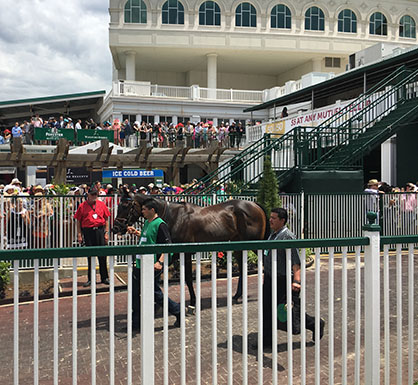The Preakness Aftermath- A Sad Ordeal For Horse Lovers All Around- Death and Disappointment
By: Brittany Bevis
The third Saturday in May began with a bright sense of hope and renewed optimism. After a 37-year drought, some wondered if we might witness yet another Triple Crown contender following last year’s win by American Pharoah. Sadly, it was not to be for 142nd Kentucky Derby winner Nyquist.
Perhaps the ominous clouds that drenched race enthusiasts and created a sloppy, mud-laden track should’ve served as a warning for the sadness that was about to come, in more ways than one…
Homeboykris
Tragedy struck early in the morning following the first race of the day. A nine-year-old gelding named Homeboykris won the opening race of the Preakness undercard. Homeboykris had his photo taken in the winner’s circle. Then, Homeboykris died after collapsing on the way back to his stall.
Various news reports suspect the cause was cardiovascular, perhaps a ruptured aorta or heart attack, since the horse appeared to be in good physical health otherwise. An autopsy is pending from the New Bolton Center in Pennsylvania.
Prameyda
Then, during the fourth race of the day, a 4-year-old mare named Prameyda fell during the race and broke her left front cannon bone. Sadly, she was euthanized on the track. This horse was owned by Barbaro’s owners, Gretchen and Roy Jackson. Racing fans will undoubtedly remember how, ten years ago, Barbaro sustained what would later become a fatal injury during the Preakness, which ended his Triple Crown hopes and cost him his life. In an eerie coincidence, Prameyda broke from the gate early and had to be reloaded, just like Barbaro did ten years ago…
On such a well-publicized race-day as the second leg of the Triple Crown, the unfortunate deaths sparked interest from activist groups like PETA who are demanding answers. PETA Senior Vice Present Kathy Guillermo released the following statement:
“PETA is calling on the owners of Pramedya and Homeboykris to immediately release veterinary records and a complete list of medications that the horses were administered in the two weeks before the Preakness races. Studies—and our own investigations—have shown that most breakdowns and deaths occur because horses have pre-existing injuries that are masked by the excessive use of legal medications. We want to know if that is what happened in the cases of Pramedya and Homeboykris. We have been advocating for no medications to be administered to horses in the two weeks before a race, so that if a horse is sore or ill, the track veterinarian will be able to detect it. In today’s racing drug culture, at least three horses are dying every day on U.S. tracks. The foolish use of muscle relaxants, anti-inflammatory drugs, and other medications must end now.”
Nyquist
The two deaths cast an uneasy pallor over Saturday’s festivities, a mood that continued when Nyquist came in third, having his Triple Crown hopes dashed by the Preakness winner Exaggerator. Any hopes for a rematch in the Belmont Stakes were put to rest yesterday morning, when it was announced that Nyquist will not be running in the race, due to a minor illness.
It was a sad ordeal for horse lovers all around.
Related Links:
New York Times- Two Horses Die During Preakness Undercard
The Washington Post– Life and Death on a Rainy Day at the Preakness Stakes
YouTube– Maryland Racing– Jack Sisterton Assistant Trainer of Nyquist Updates Condition
New York Times– Nyquist Won’t Run in Belmont Stakes











